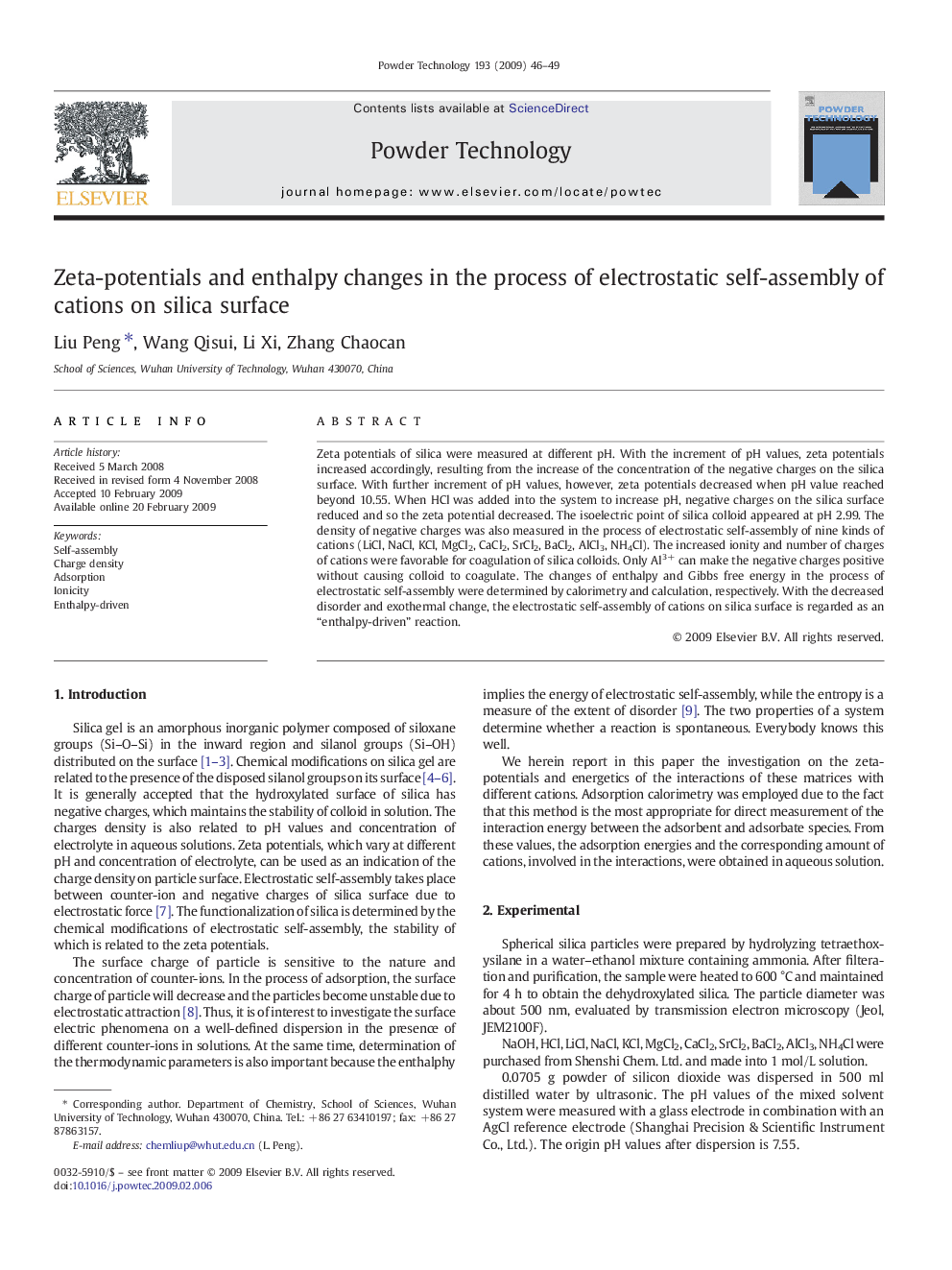| Article ID | Journal | Published Year | Pages | File Type |
|---|---|---|---|---|
| 238002 | Powder Technology | 2009 | 4 Pages |
Zeta potentials of silica were measured at different pH. With the increment of pH values, zeta potentials increased accordingly, resulting from the increase of the concentration of the negative charges on the silica surface. With further increment of pH values, however, zeta potentials decreased when pH value reached beyond 10.55. When HCl was added into the system to increase pH, negative charges on the silica surface reduced and so the zeta potential decreased. The isoelectric point of silica colloid appeared at pH 2.99. The density of negative charges was also measured in the process of electrostatic self-assembly of nine kinds of cations (LiCl, NaCl, KCl, MgCl2, CaCl2, SrCl2, BaCl2, AlCl3, NH4Cl). The increased ionity and number of charges of cations were favorable for coagulation of silica colloids. Only Al3+ can make the negative charges positive without causing colloid to coagulate. The changes of enthalpy and Gibbs free energy in the process of electrostatic self-assembly were determined by calorimetry and calculation, respectively. With the decreased disorder and exothermal change, the electrostatic self-assembly of cations on silica surface is regarded as an “enthalpy-driven” reaction.
Graphical abstractThe density of negative charges was measured in the process of electrostatic self-assembly of nine kinds of cations. The increased ionity and number of charges of cations were favorable for coagulation of silica colloids. According to the changes of enthalpy and Gibbs free energy, the electrostatic self-assembly of cations on silica surface is regarded as an “enthalpy-driven” reaction with the decreased disorder and exothermal change.Figure optionsDownload full-size imageDownload as PowerPoint slide
